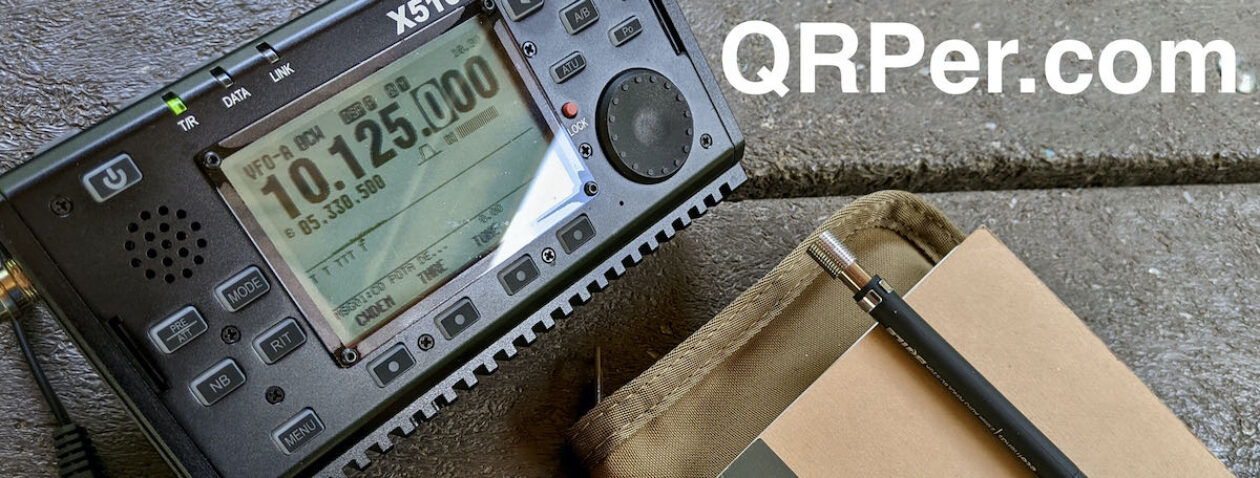You might recall that my friends Eric (WD8RIF), Miles (KD8KNC), Brian (K3ES), Kyle (AA0Z), Charlie (NJ7V), and Joshua (N5FY) all played hooky on the final day of the 2024 Hamvention (Sunday, May 19) and instead activated a couple of POTA sites.
I wrote a short field report about our first activation at Pater State Wildlife Area (US-9492). It was a lot of fun despite the rough bands.
Our next stop was Whitewater Canal State Historic Site in Metamora, Indiana, about an hour’s drive from the first park.
Only four of us continued to the next park; Kyle and Charlie needed to head to the airport, and Joshua needed to start his drive back to Georgia.
Whitewater Canal State Historic Site (US-6977)
 I was excited about visiting Whitewater Canal because it would be my first official POTA activation in Indiana.
I was excited about visiting Whitewater Canal because it would be my first official POTA activation in Indiana.
 We arrived around 1:00 PM and opted to grab lunch at a nearby pizzeria before activating.
We arrived around 1:00 PM and opted to grab lunch at a nearby pizzeria before activating.
 Around 2:00 PM, we grabbed our gear from the car and walked across the road to the park grounds.
Around 2:00 PM, we grabbed our gear from the car and walked across the road to the park grounds.
 The Whitewater Canal State Historic Site offers a glimpse into the 19th-century canal era.
The Whitewater Canal State Historic Site offers a glimpse into the 19th-century canal era.
 Built between 1836 and 1847, the Whitewater Canal was a 76-mile waterway that connected the Ohio River to Hagerstown, facilitating the transport of goods and agricultural products.
Built between 1836 and 1847, the Whitewater Canal was a 76-mile waterway that connected the Ohio River to Hagerstown, facilitating the transport of goods and agricultural products.
 This engineering feat played a vital role in the economic development of the region, contributing to the growth of towns and industries along its path.
This engineering feat played a vital role in the economic development of the region, contributing to the growth of towns and industries along its path.

Today, the preserved section of the canal, along with the historic grist mill and other structures, stands as a testament to Indiana’s rich industrial and transportation heritage.
 I’ve always been fond of railroads and canals, so this site was brilliant as it featured both running parallel to each other!
I’ve always been fond of railroads and canals, so this site was brilliant as it featured both running parallel to each other!


 Eric, Brian, and I (Miles didn’t activate) were careful to set up within the actual park boundaries.
Eric, Brian, and I (Miles didn’t activate) were careful to set up within the actual park boundaries.

 In this case, it was a little difficult to determine the exact boundaries because the town and park blend together.
In this case, it was a little difficult to determine the exact boundaries because the town and park blend together.
I used the Parceled app on my phone to confirm our location.
 Eric set up his Elecraft KH1 station at a picnic table under a large tree.
Eric set up his Elecraft KH1 station at a picnic table under a large tree.
Brian set up his KX2 on a covered bench next to Eric, using his Elecraft AX1 antenna mounted on a clamp secured to the bench.
 Brian’s site was super stealthy behind the sign–since he operated with earphones, you couldn’t hear him and barely could see him!
Brian’s site was super stealthy behind the sign–since he operated with earphones, you couldn’t hear him and barely could see him!

I wanted to put some space between my station and theirs, so I set up under the shade of a tree (it was blazing hot that Sunday) and deployed my Helinox camping chair.

I then deployed my Chelegance MC-750 vertical for 20-meter operation since Brian and Eric were on other bands.
I connected the MC-750 to my Elecraft KX2, which I mounted on my kneeboard, and was ready to play radio! My hope was that band conditions would be decent. Continue reading From Hamvention to History: A POTA Excursion with friends through Indiana’s Past



















































